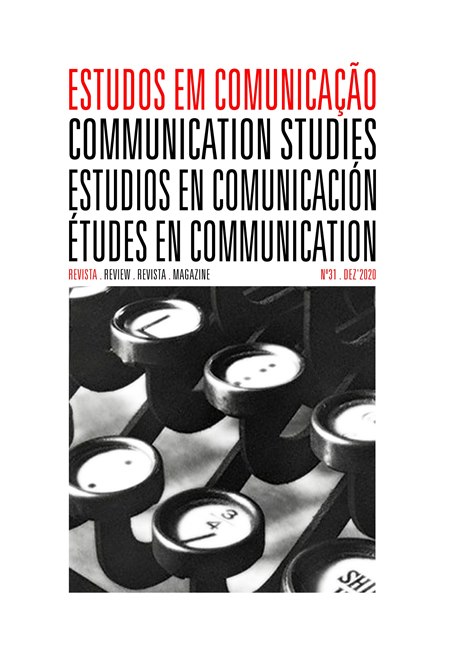The fake news pandemic on Facebook during the covid-19
Keywords:
Fake News, Covid-19 pandemic, FacebookAbstract
The article analyzes the spread of fake news during the covid-19 pandemic on Facebook. The corpus consists of 53 posts published in Brazilian profiles between July and August 2020. For the identification of false messages, we use the Lupa agency's fact-checking service as a reference, which has a specific section to analyze the dissemination of this type of content. on the social media studied. The objective is to verify which subjects and characters gained more prominence during the covid-19 pandemic. For this, we use the methodology of quantitative content analysis. Based on the classification proposed by Claire Wardle, we also identified the most common types of fake news found on Facebook in the collected posts. The result showed that most of the fake news contained manufactured content, entirely fake, created to deceive and misinform users of social media. The main target of the messages were politicians and celebrities.
References
Almeida, R. D. (2019). Bolsonaro presidente: conservadorismo, evangelismo e a crise brasileira. Novos estudos CEBRAP, 38(1): 185-213.
Alcott, H., & Gentzkow, M. (2017). Social Media and Fake News in the 2016 Election. Retrieved from Stanford University.
Bovet, A. & Makse, H. (2019). Influence of fake news in Twitter during the 2016 US presidential election. Nature communications, 10(1): 1-14.
Branco, S. (2017). Fake news e os caminhos para fora da bolha. ITS, (1): 51-61.
Bardin, L. (2010). Análise de conteúdo. 4. ed. Lisboa, Edições 70.
Canavilhas, J. & Ferrari, P. (2018). Fact-checking: o jornalismo regressa às origens. Jornalismo em tempo de transformação: desafios de produção e de ação. 30-49.
Garcia, A. (2019). Brazil under Bolsonaro: Social base, agenda and perspectives. Journal of Global Faultlines, 6(1): 62-69.
Gelfert, A. (2018). Fake news: A definition. Informal Logic, 38(1): 84-117.
Graves, L. (2018). Boundaries not drawn: Mapping the institutional roots of the global fact-checking movement. Journalism Studies, 19(5): 613-631.
Jack, C. (2017). Lexicon of lies: Terms for problematic information. Data & Society, 3(22).
Nielsen, R. & Graves, L. (2017). News you don’t believe: Audience perspectives on fake News. Reuters Institute for the Study of Jounalism.
Lage, N. (2014). A reportagem: teoria e técnica de entrevista e pesquisa jornalística. Rio de Janeiro: Record.
Lazer, D.; Baum, M.; Benkler, Y.; Berinsky, A.; Greenhill, K.; Menczer, F. & Schudson, M. (2018). The science of fake news. Science, 359(6380): 1094-1096.
Lowrey, W. (2017). The emergence and development of news fact-checking sites: Institutional logics and population ecology. Journalism Studies, 18(3): 376-394.
Ramalho,W. (2018). O combate às fake news no brasil: Um estudo sobre a checagem de fatos.
Recuero, R. & Gruzd, A. (2019). Cascatas de Fake News Políticas: um estudo de caso no Twitter. Galáxia (São Paulo), (41): 31-47.
Seaton, J., Sippitt, A., & Worthy, B. (2020). Fact Checking and Information in the Age of Covid. The Political Quarterly, 91 (3), 578-584.
Tandoc Jr, E.; Lim, Z. & Ling, R. (2018). Defining “fake news” A typology of scholarly definitions. Digital journalism, 6(2): 137-153.
Wardle, C. (2017). Fake news. It’s complicated. First Draft, 16.
Wardle, C. & Derakhshan, H. (2017). Information disorder: Toward an interdisciplinary framework for research and policy making. Council of Europe report, 27.
Zuckerman, E. (2017). Stop Saying Fake News, It’s not Helping. My Heart is in Accra.
Downloads
Published
Issue
Section
License
Estudos em Comunicação/Communication Studies is an Open Access journal. All its content is freely available without charge to the user or his institution. Users are allowed to read, download, copy, distribute, print, search, or link to the full texts of the articles in this journal without asking prior permission from the publisher or the author. Estudos em Comunicação, by Labcom, is licensed under a Creative Commons Atribuição-NãoComercial-SemDerivações 3.0 Unported License. By submitting your work to Estudos em Comunicação/Communication studies you confirm you are the author and own the copyright, that the content is original and previously unpublished, and that you agree to the licensing terms.


